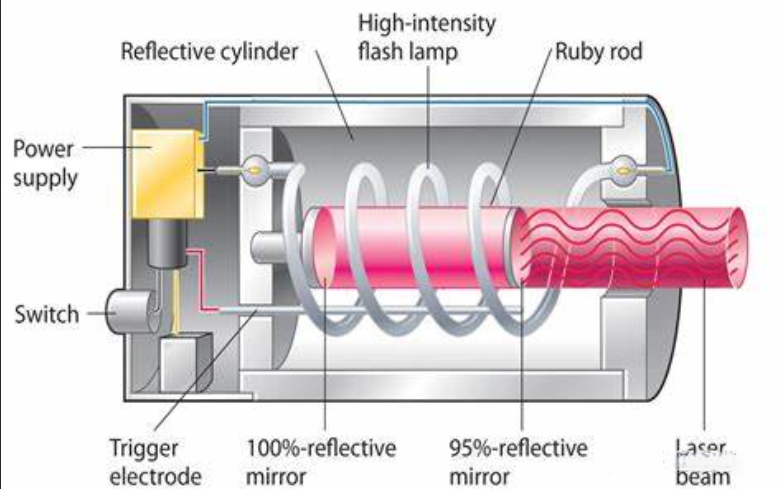The physical mechanism elements of laser formation: from quantum transition to photon synchronization
The emergence of lasers marked the first time that humans had achieved the manipulation of photons. Its principle integrates multiple fields such as quantum mechanics and precision engineering.
I. Quantum Transition
The generation of lasers began with quantum transitions between atomic energy levels. When an electron absorbs energy and transitions to a higher energy state, the system is in an unstable state. At this time, the electron releases energy in two ways:
Spontaneous emission: Electrons randomly jump back to a lower energy state and emit photons with different directions and phases.
Stimulated emission: When the energy of an external photon matches the energy level difference, it will induce electrons in an excited state to simultaneously release exactly the same photon, which forms the basis of optical amplification.
Ii. Key Factors for the Birth of Lasers
Particle number inversion
The pump system breaks the thermal equilibrium state, enabling the working substance to form metastable energy levels. For example, in a helium-neon laser, helium atoms transfer energy to neon atoms, causing the neon atoms to form particle number inversion.
Resonant cavity feedback
An optical resonant cavity composed of two mirrors allows photons in a specific direction to travel back and forth multiple times. When the gain exceeds the loss, a positive feedback loop will be formed, and eventually a coherent beam will be output.
Mode selection
The distribution of the longitudinal and transverse modes is controlled through short cavity design or grating feedback to achieve single-frequency and single-mode output.
Iii. Bose Statistics
Identical photons: Photons produced by stimulated radiation have exactly the same frequency, phase and polarization state.
Wave function superposition: A large number of identical photons form macroscopic quantum states, endowing light with perfect coherence.
This characteristic endows lasers with features that ordinary light sources cannot match:
Directionality: The divergence Angle of a common light source is relatively large, while that of a laser light source is relatively small and its direction is fixed.
Monochromaticity: The spectral line width of a laser is narrower than that of an ordinary light source, thus it has better monochromaticity.
High brightness: The laser emits highly parallel beams and can be emitted with a higher concentration.

 EN
EN
 AR
AR
 BG
BG
 CS
CS
 DA
DA
 NL
NL
 FI
FI
 FR
FR
 DE
DE
 EL
EL
 IT
IT
 JA
JA
 KO
KO
 NO
NO
 PL
PL
 PT
PT
 RO
RO
 RU
RU
 ES
ES
 SV
SV
 TL
TL
 ID
ID
 LV
LV
 SR
SR
 SK
SK
 SL
SL
 UK
UK
 VI
VI
 SQ
SQ
 ET
ET
 HU
HU
 TH
TH
 TR
TR
 FA
FA
 GA
GA
 BE
BE
 AZ
AZ
 KA
KA
 LA
LA
 UZ
UZ

